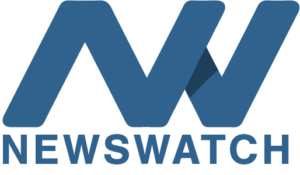All businesses deal with physical assets like heavy equipment, inventory, and physical documents or files. Now, there are many proven ways to manage these physical assets, such as good warehouses, bank lockers, etc. However, with this technical advancement, the number of digital assets for any business is increasing day by day. Businesses heavily rely on digital assets like photos, videos, logos, presentations, or any other media files because these digital assets play a crucial role in marketing, product development, and any business or client communication.
According to a Stastia report, The Digital Assets market worldwide is projected to generate revenue of US$46,320.0m by 2025. This market is assumed to grow at a notable CAGR for upcoming years.
These numbers show the increasing number of digital assets in the business, and this increment demands proper management of digital assets. For example, you have a marketing team, and they have a very good idea to increase your brand visibility. But they have to struggle to find good, high-quality photos or videos of your brand, and you don’t know where you stored them. Thus, without proper management of digital assets, your business may waste time and lose good opportunities.
This is where your business needs good digital asset management software like Bynder. If we talk about Bynder and how it works, then Bynder is DAM software that allows businesses to visualize, organize, and streamline all of their digital assets. Thus, it makes it easy for businesses to store every asset in the right place and make it easily accessible whenever anyone needs it.
However, Bynder has a few limitations, like high pricing, maintenance, and lack of customization. That’s why Many businesses have different needs and wish to build custom asset management software for their own businesses. Building DAM software like Bynder requires a significant investment and good research. So, if you want customized DAM software, then this article is for you.
In this article we will discuss different factor that decides the cost of building a digital management software, we will provide you a cost estimation and also help you with the step by step guild to develop a bespoke digital asset management software for your business.
Factors That Affect the Cost of Building Digital Asset Management Software
When it comes to buying DAM software like Bynder, proper strategic planning is required at every level, from technical to operation to industry. When you think about the cost of building digital asset management software, then it will 100% depend on different factors like features, size of the development team, development complexity, and others. Thus, a standard simple DAM may cost you less, but feature-rich advanced software like Bynder may cost you more. Following are some of the most important factors that impact the cost of building a digital asset management system.
1. Features & Functionality
The higher the complexity and number of features, the greater the cost of developing the DAM software. Simple functionalities such as asset storage, retrieval, and metadata tagging are cheaper, whereas the advanced features include AI-powered search, automation, and real-time collaboration, significantly increasing the development timeline and cost. Moreover, integration with third-party application-wise requires extensive API development work which goes on to further increase the budget.
Cost Impact:
- Basic Features: Organization of assets, filters for searching, metadata tagging (Lower price).
- Advanced Features: AI tagging, automated workflow, versioning (Higher price).
- Custom Features: Industry-specific features and integration (Very high price).
Features that your DAM software should have in 2025:
- AI-Powered Search & Tagging like automated metadata, facial recognition, & Smart categorizing.
- Automated workflow management for streamlined processes in approvals of the asset’s life cycle with cloud-based solutions on-premises.
- Hybrid Storage using scalable Cloud for flexible storage to the end users
- Intuitively traces any edits to create rollbacks with history.
- Robust authentication, along with permission that multi-layer provides
- Multichannel delivery like direct social media publishing; easy integration through the CMS/ Marketing tools.
- Content Rights & Expiry Management of automated expiry reminders and digital rights tracking.
- API-First Integration for seamless connectivity to marketing, ERP, and cloud platforms.
- AI-driven analytics to get Insights into asset performance, usage trends, and recommendations.
- Digital Watermarking & Copyright Protection
2. Software Type & Deployment
Normally, there are three types of deployment models: Cloud-based (SaaS), On-premise, or Hybrid. Generally, SaaS solutions are more accessible for businesses with limited budgets because they have lower upfront costs and recurring subscription fees. At the same time, on-premise solutions require a high initial investment in infrastructure and IT maintenance, though they provide full control over data security. Hybrid models are the most costly ones because they offer full flexibility with dual infrastructure management.
- Cost Impact:
- Cloud-based SaaS: Low acquisition cost, while there is some recurring cost involving storage and usage.
- On-premise: Extremely high acquisition since one has to build infrastructure of their own.
- Hybrid model: Development for both cloud-based and on-site models, respectively.
3. Technology Stack
The most important part of building digital asset management software like Bynder is a technical stack because the use of programming languages, frameworks, and databases in the project will impact the development time, security, and scalability. If any business wants higher scalability, they can go for f cloud-native technologies, such as AWS, Google Cloud, or Azure. If businesses go for open-source technologies like Node.js, React, Python, and PostgreSQL, then the cost of DAM will be reduced. Additionally, proprietary technologies and licensing fees for specific tools raise costs.
- Cost Impact:
- Open-source technologies: Lower initial costs, but more customization may be needed.
- Enterprise-grade technologies: Higher licensing and operational costs but offer better security and support.
- AI-powered functionalities: Require additional data processing capabilities, increasing infrastructure and development costs.
4. Development Team & Location
The cost of developing DAM software depends on the development team’s expertise and location. It can be quite costly to hire in-house developers from North America or Western Europe. As a solution, businesses can hire software developers or outsource projects from regions like Eastern Europe, South America, or Asia (especially from India) to get the same quality at lower costs.
- Cost Impact:
- In-house: High salary, benefits, and operational costs.
- Nearshore: Cost savings with minimal time zone incompatibility.
- Offshore outsourcing: Lower development costs but may require additional project management.
5. Security & Compliance
DAM software doesn’t just store digital assets; it stores the sensitive information of your business, which is why security measures and compliance with industry standards like GDPR, HIPAA, and SOC are very important. Your digital asset management software also needs multi-factor authentication(MFA), role-based access control, and secure APY integrations. Beyond all of these advances, security features like blockchain for asset verification further increase development costs.
- Cost Impact:
- Basic security: Role-based access and password protection (Lower cost).
- Advanced security: Encryption, MFA, audit logs, compliance features (Higher cost).
- Enterprise-grade security: Blockchain-based authentication and threat detection are driven by AI (Very high cost).
6. UI/UX Design
A DAM system requires a user-friendly and intuitive design to avoid resistance to technological change. Responsive design, drag-and-drop features, and UI cleanliness ensure usability; however, it is costly in terms of extensive wireframing, prototyping, and iterative testing.
- Cost Impact:
- Basic UI/UX: The simple, template-based design with standard navigation is relatively low cost.
- Custom UI/UX: Personalized dashboards, dynamic elements, and animations. (Higher cost)
- Enterprise UI/UX: AI-powered personalization, multilingual support, mobile-first approach. (Very high cost).
7. Storage & Infrastructure
DAM software requires scalable storage solutions to deal with massive digital assets. The business has to choose whether to have cloud-based storage- be it AWS S3, Google Cloud, or Microsoft Azure. The costs escalate with the increase in storage capacity, data transfer rates, and redundancy requirements.
- Cost Impact:
- Cloud storage (SaaS): Pay-as-you-go pricing, lower maintenance but recurring costs.
- On-premise storage: High initial investment, but no recurring cloud storage fees.
- Hybrid storage: Balance between control and scalability but requires higher development effort.
8. Testing & Maintenance
A DAM software must be tested rigorously to ensure security, performance, and usability. This includes functional testing, performance testing, security audits, and user acceptance testing (UAT). After the launch, a budget is required for bug fixes, updates, and customer support.
- Cost Impact:
- Automated testing: It requires an upfront investment in testing tools but reduces long-term costs.
- Manual testing: It is more time-consuming, which increases the initial development cost.
- Ongoing maintenance: It ensures long-term system stability, requiring a dedicated team.
9. Customization & Scalability
Businesses usually need a DAM system that can be tailored to their workflows, branding, and asset distribution needs. Scalability ensures the system can accommodate increasing asset volumes and user traffic, but custom-built solutions require additional development time and resources.
- Cost Impact:
- Basic customization: White-label branding and minor workflow adjustments (Lower cost).
- Moderate customization: API integrations, advanced search filters, and workflow automation (Higher cost).
- Full personalization: AI-powered suggestions, domain-centric add-on modules, multi-cloud infrastructure (Extremely expensive).
Estimated Cost Table From These Factors

( Note: The final cost of developing digital asset management software like Bynder depends on complexity, team location, and feature set.)
Steps to Build DAM software Like Bynder
Building DAM software will require a structured approach that satisfies business needs and scales to provide seamless integration into existing workflows. Here’s the step-by-step guide for businesses planning to develop a DAM solution.
1. Define Business Goals & Requirements
Start by establishing the core purpose of your DAM software—be it marketing, brand management, or internal collaboration. Outline what must be available, user roles, and desired outcomes. Having a clear roadmap helps in getting realistic budgets and timelines.
2. Plan the Technology & Development Approach
Scalability and performance heavily rely on a correct choice of technology stack and architecture. Therefore, choose either a cloud-based, on-premise, or hybrid solution that is suitable to your business, and don’t forget the possible integrations with already used CMS, ERP, or project management platforms.
3. Building and Designing the Platform
Work with a development team to develop a user-friendly, scalable, and secure DAM system. The right design for UI/UX ensures easy adoption and a solid backend infrastructure can efficiently support the storage, retrieval, and processing of assets.
4. Testing, Deployment, & Training the Users
Before launch, test thoroughly for security, performance, and usability. Roll out the software in phases, beginning with a pilot version. Training employees and key stakeholders on its functionalities will drive adoption and maximize ROI.
5. Maintain, Scale & Optimize
Post-launch, constant updates, and security patches are very important to maintain the efficiency of the software. As your business grows, scale storage, add AI automation, and refine workflows to maintain long-term efficiency and value.
Businesses can thus develop a DAM solution that streamlines asset management, enhances collaboration, and boosts operational efficiency. But if you don’t want to go through this process or you don’t have time to take care of every detail, then you should partner with an experienced software development company. This kind of company has enough skilled people and expertise to handle any complicated projects. Additionally, they can guide you through each step of developing DAM software. A good software development company like Bynder can ensure that you have the exact digital asset management software you need.
This is a reminder that the cost of building digital asset management software is totally dependent on your needs and the customization you want in your software. So your first step should be to decide what exactly you need in your DAM software. Then, you can hire an in-house team, outsource software developers, or partner with a good software development company to develop your dream software.





